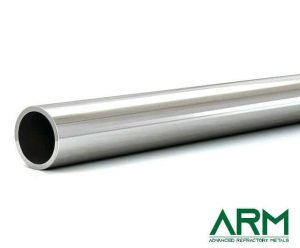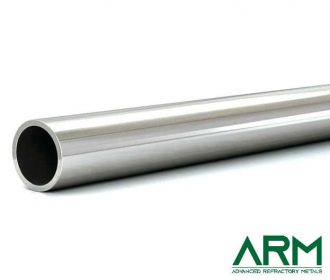Introduction
When selecting pipes for industrial systems exposed to highly corrosive substances and extreme temperatures, tantalum pipes are often the top choice due to their remarkable corrosion resistance and longevity. However, choosing the right tantalum pipes requires careful consideration of several factors to ensure optimal performance and cost-effectiveness.

1. Assess the Type of Corrosive Substances
The first step is to evaluate the specific chemicals the pipes will be exposed to. Tantalum is highly resistant to most acids, including sulfuric, hydrochloric, and nitric acids, making it ideal for handling aggressive chemicals. However, be mindful that it is vulnerable to hydrofluoric acid and concentrated alkali solutions. Ensure that the properties of tantalum align with the chemical environment in which it will be used.
2. Consider Temperature Range
Tantalum pipes can withstand high temperatures without losing their mechanical properties. They are commonly used in environments where temperatures reach up to 500°C (932°F) or more. It’s important to confirm that your application operates within this temperature range to avoid performance degradation.
3. Evaluate Pressure Requirements
Tantalum pipes are available in both welded and seamless forms, and the choice between the two depends largely on the pressure levels within the system. For high-pressure applications, seamless tantalum pipes are preferred due to their superior strength and uniform structure. Welded pipes are more cost-effective but may not be suitable for extreme pressure conditions.
4. Balance Cost vs. Long-Term Benefits
Tantalum pipes are more expensive upfront compared to other materials like stainless steel or titanium. However, their ability to resist corrosion for extended periods reduces the need for frequent replacements and maintenance, leading to significant long-term savings. Evaluate the total cost of ownership, including maintenance and downtime, when comparing materials.
5. Check Compatibility with Other Materials
If your piping system combines different materials, it’s crucial to ensure that tantalum pipes are compatible with the other components. Incompatible materials can lead to galvanic corrosion at connection points. Tantalum is often combined with other metals or glass-lined systems, but careful attention must be paid to material compatibility.
6. Determine Custom Fabrication Needs
Tantalum pipes can be custom-made to fit specific dimensions, wall thicknesses, and shapes. If your application has unique design constraints or requires tailored solutions, custom fabrication is a key consideration. Additionally, options such as coatings or hybrid designs can further enhance performance in challenging environments.
7. Plan for Maintenance and Installation
While tantalum pipes require minimal maintenance, it’s essential to ensure that installation and repairs are performed by experienced professionals familiar with the material. Incorrect handling during installation can lead to damage or reduced lifespan. Plan for routine inspections and ensure your team is trained in handling tantalum components.
8. Verify Compliance with Industry Standards
Ensure that the tantalum pipes you select meet industry standards such as those from ASTM (American Society for Testing and Materials) or ASME (American Society of Mechanical Engineers). Compliance with these standards ensures the material’s reliability and suitability for the intended environment.
| Key Consideration | Details |
| Corrosive Substances | Resistant to most acids
(e.g., sulfuric, hydrochloric, nitric); vulnerable to hydrofluoric acid. |
| Temperature Range | Ideal for high temperatures,
typically up to 500°C (932°F) without performance degradation. |
| Pressure Requirements | Seamless pipes for high-pressure applications;
welded pipes for moderate pressure systems. |
| Cost vs. Long-Term Benefits | Higher upfront cost,
but significant long-term savings due to durability and low maintenance. |
| Material Compatibility | Ensure compatibility with other system materials
to avoid galvanic corrosion at connection points. |
| Custom Fabrication | Available in custom dimensions,
wall thicknesses, and shapes for unique applications. |
| Installation and Maintenance | Requires specialized handling
for installation and repairs; minimal routine maintenance needed. |
| Compliance with Standards | Ensure pipes meet ASTM, ASME,
or other industry-specific standards for reliability and safety. |
Conclusion
Choosing tantalum pipes for corrosive environments is a strategic decision. By considering the type of chemicals, temperature and pressure requirements, long-term cost benefits, and installation needs, you can make an informed choice.
Advanced Refractory Metals (ARM) offers tantalum pipes in both seamless and welded varieties. We also provide custom-shaped and machined tantalum parts designed to meet your specific requirements. For further details, please visit our website.

Recent Comments